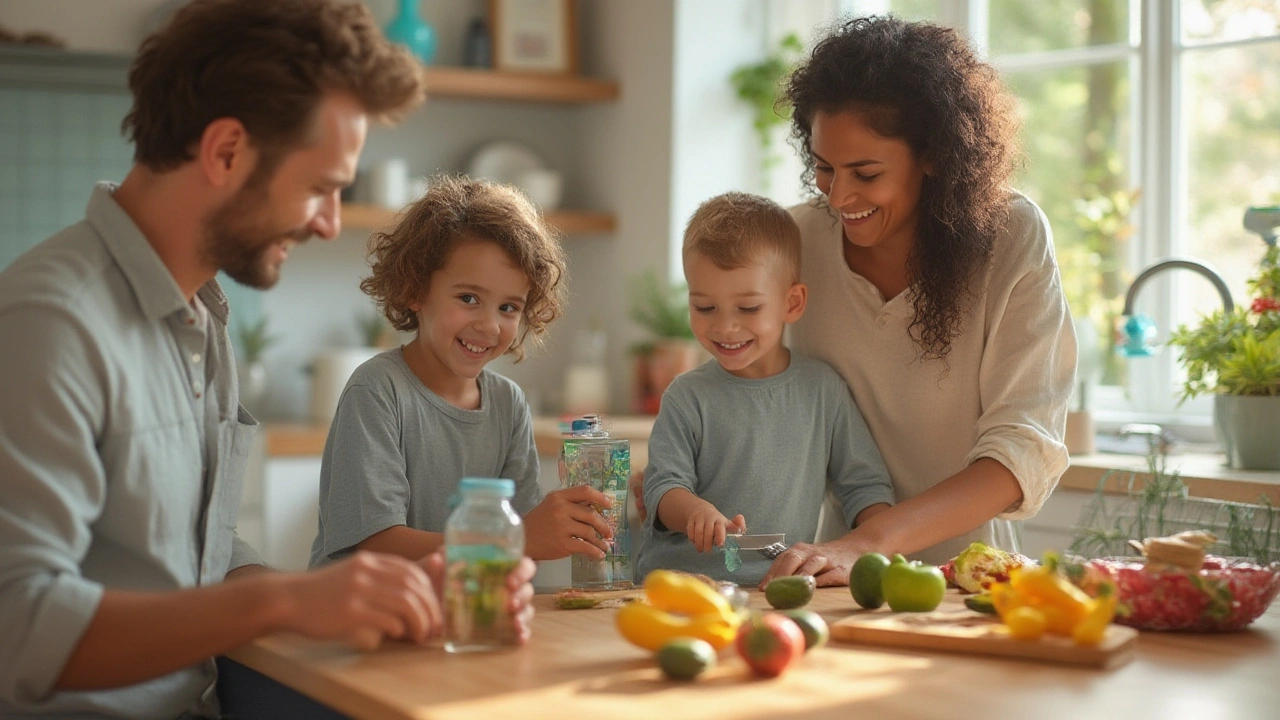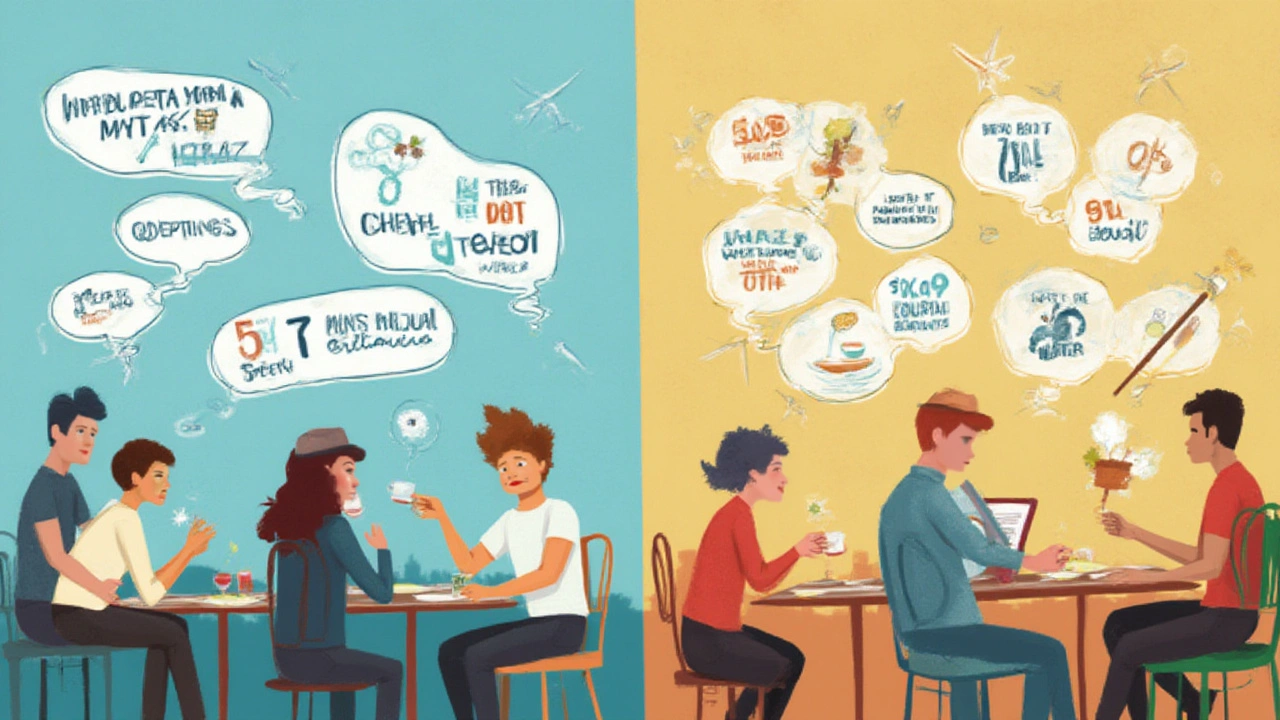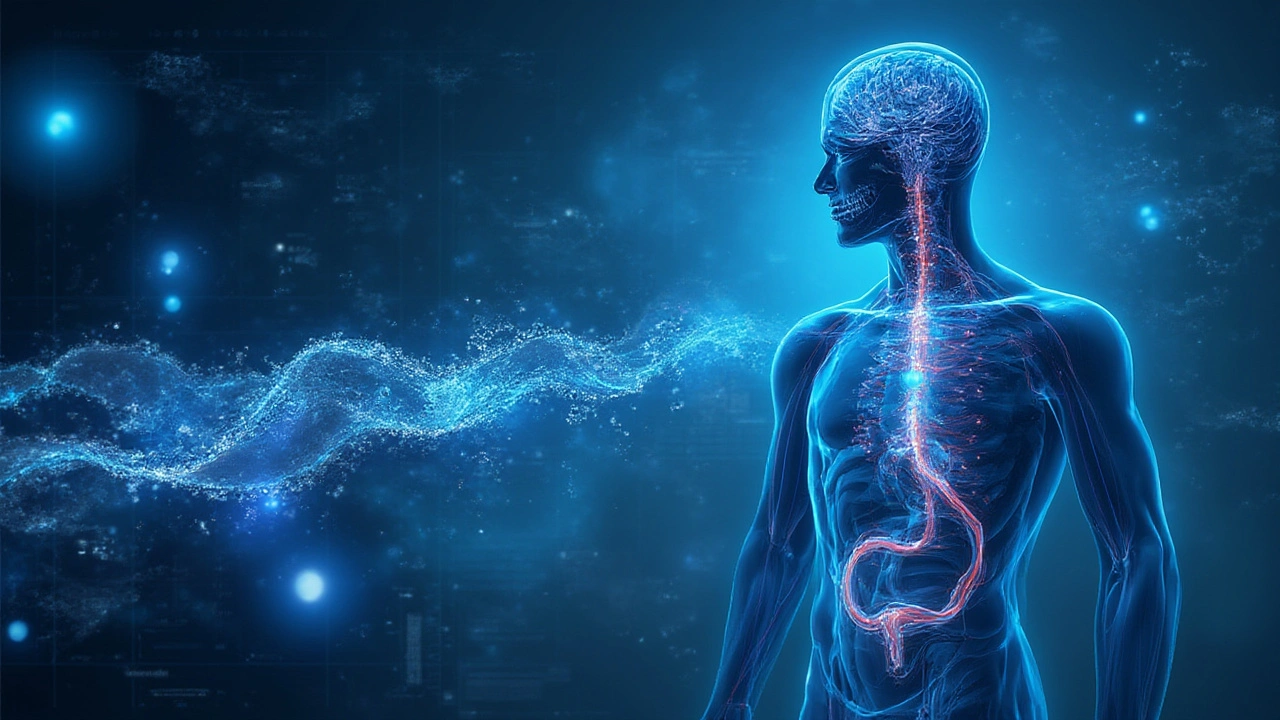One in ten people thinks they're drinking enough water, yet half the UK population lives in a state of mild dehydration. It's wild, right? Your mood's low, your energy's gone—but you blame work or the weather. The real culprit might just be that you haven't had enough water today. Let's talk Hydrocl: one word that could be the key to sorting your energy, your mood, even your waistline. Forget the old 'eight glasses' advice. There’s way more to it than that, and loads of little details that make all the difference, whether you’re grabbing a flat white in Bristol or sprinting for the bus in summer. This isn’t just about feeling less thirsty. It’s about switching on everything that makes you tick, from your brain to your skin.
What's Hydrocl? Breaking Down the Basics
The term "Hydrocl" started floating around wellness circles a few years ago, combining "hydro"—Latin for water—and a nod to the idea of a "protocol." So, Hydrocl is really about your personal hydration protocol: how much water you need, how your lifestyle affects it, and how your body acts when you get it right. Sounds basic, but there’s a world of science behind it. Your body is about 60% water, and even a 1-2% drop sets off alarms, from headaches to poor focus. Even a small decrease messes with physical performance and mood. In fact, a 2015 study out of the University of East London found that kids who drank more water at school scored higher on memory tests. That’s not a fluke; water is needed for every cell in your body to do its job, including making energy, clearing out waste, and regulating temperature.
If you’re feeling tired, cranky, or struggling to focus, dehydration could be the sneaky reason. Think about it: water helps your body transport oxygen and nutrients where they're needed. When you’re dehydrated, things slow down—no wonder you feel sluggish. That’s why marathon runners are obsessed with their hydration strategies, but you don’t have to be an athlete to see the benefits. People who work indoors get dehydrated faster than they think, due to heating or air con. Even mild dehydration shrinks your brain tissues slightly, leading to those classic “afternoon fog” symptoms. So, Hydrocl isn’t just a buzzword. It’s understanding what your body's craving and giving it exactly that.
How Water Impacts Mind and Body
People massively underestimate the domino effect even a little dehydration has on daily life. Your blood gets thicker, your heart works harder. Headaches show up out of nowhere. Mood swings get sharper. In one fascinating survey from King’s College London, students who upped their water intake for just a week reported better concentration, better skin, and even better sleep. That’s probably because your body uses water for temperature control, toxin removal, and supporting every organ. Want your kidneys, liver, muscles, and skin to do their best? Give them enough water.
Your brain is especially touchy about hydration. Only about 2% dehydration equals a marked dip in short-term memory, focus, and visual-motor skills. Jumping on a Teams call after skipping water at lunch? You’ll probably feel less on the ball. There’s solid science behind why you reach for a glass of water before coffee or painkillers when you have a headache—your brain tissue is sensitive to subtle changes.
And it isn’t just about thinking and energy. Skin needs water to stay plump and bounce back, which is why dehydration shows up as dry patches and fine lines. Researchers at the University of Manchester found hydration boosts the skin’s elasticity in just two weeks. For gut health, water is the smooth operator—literally. Digestive processes rely on enough fluids, and you’ll notice if you’re falling short. It’s no coincidence that NHS advice for constipation starts with fluids. Muscles, too, lose power when thirsty. This is key for gym goers: just a 2% drop in hydration can mean a 15% decrease in athletic performance, which could explain half the gym struggles out there.
| Dehydration (%) | Effects Noticed |
|---|---|
| 1-2% | Headache, fatigue, mild mood drops |
| 2-3% | Noticeable drop in memory, focus, skin dryness |
| 3-5% | Dizziness, performance loss, risk of fainting |
Even mild dehydration causes all kinds of knock-on effects, but it’s all reversible—and so much easier to prevent than fix!

The Real Signs You Need More Water
Forget waiting till you feel thirsty—that’s too late. By the time you get that signal, you’re already behind. So, what should you look out for with Hydrocl? Some are sneaky: headaches, muscle cramps, or even feeling a bit blue for no obvious reason. Dry mouth is an obvious one, but dry skin, bloating, or dark urine are stronger signs. Your body’s clever—it’ll tell you, but you need to listen before things get annoying.
Urine colour is a surprisingly good hydration tracker. You want it to be a pale straw shade—any darker and it’s a nudge to up your fluids. Frequent mid-afternoon energy crashes or sugar cravings also tie to being slightly under-hydrated; your brain confuses thirst for hunger, which sends you reaching for snacks. Even bad breath can be a result—without enough water, you don’t make enough saliva to keep bacteria in check.
If you’re exercising, in the sun, or even having a few pints the night before (hello Bristol nightlife), you’ll need more than usual. Sweating, caffeine, and alcohol all speed up water loss. Some UK folks are surprised to learn that even cold, damp weather increases dehydration risk—breathing out steamy “dragon” breath is really just losing water.
- Headaches, poor concentration, and low mood
- Skin loses bounce, showing more fine lines
- Heavy limbs, muscle cramps, sluggishness
- Dark yellow urine, less than 4 wees a day
- Dry mouth, bad breath, craving fizzy drinks
Catch symptoms early and you’re halfway to making Hydrocl a habit that sticks.
Practical Hydrocl Tips for Everyday Life
If the idea of counting every glass is already making your head spin, good news: it doesn’t have to be that rigid. Studies from the University of Bristol show that most UK adults drink only 1.2 litres of water a day—well below the recommended 2 litres. But cups of tea, coffee, and even watery foods all count. If you’re hooked on tea, you’re still getting hydration, so ignore the myth that caffeine is a ‘thirst maker’—the effect is tiny. Soup, watermelon, cucumber, and porridge all contribute too.
Make water easy to grab—keep a reusable bottle in sight. Every time you get up from your desk, take a few sips. If plain water isn’t your jam, pop in a slice of lemon, mint, or berries for a very fancy vibe. Apps can help remind you if you’re someone who gets so busy you forget—try ones like WaterMinder or Plant Nanny, which use gentle nudges rather than nagging notifications.
Morning rituals shape the day, so try drinking a glass as soon as you wake up. That first drink gets your body started and makes up for water lost overnight. If you’re heading to exercise, turn up already hydrated: starting a workout thirsty leads to poor performance, even on a short run. Pepper your routine with little reminders—pair water with daily habits like brushing your teeth or making your morning cuppa. Find what works, and let it become second nature.
Sometimes, you need more than basics. If you’re ill, breastfeeding, or somewhere hot, push up your intake. For hangovers, match each alcoholic drink with water—your next day self will be very grateful. For older adults, the thirst reflex weakens, so conscious sipping matters even more. Make it social—challenge friends or housemates to a “water week” and see who can drink their two litres every day.
- Include teas, coffee, and high-water foods in your Hydrocl
- Set reminders on your phone to drink every hour
- Keep a full water bottle within arm’s reach
- Jazz up water with fruit, cucumber, or herbal infusions
- Start and end your day with a glass of water
- If you’re ill or active, drink extra (don’t wait to feel thirsty)
Little tweaks make Hydrocl effortless, so it doesn’t feel like yet another thing on your to-do list.

Hydrocl Myths and What Science Says
You’ve probably heard that everyone needs exactly eight glasses of water a day—it’s one of those health mantras that just won’t die. But the British Nutrition Foundation says there’s no ‘one size fits all.’ Needs vary depending on the weather, your activity, and even what you eat. More surprisingly, sports drinks with electrolytes are usually only needed for high-intensity or long-duration activities, not a stroll around the harbourside. For most folks, plain water and a balanced diet do the job, even after moderate exercise.
Another persistent myth? That “clear urine” is the gold standard. Actually, pee that’s totally clear can mean you’re overdoing it and flushing out helpful minerals. Aim for pale straw instead. And about caffeine: moderate amounts don’t dehydrate you to any real degree. The caffeine in a cuppa might nudge your bladder, but you still come out ahead in hydration.
Detox water and “alkaline” brands are everywhere, but there’s little solid science behind claims that you need fancy water to thrive. Tap water in the UK is safe, cheap, and does the trick. The only thing standard tap can’t do is cure all your ills—if you’re feeling rough, water’s just a small piece of a bigger health puzzle.
It’s easy to get snowed under by hype. True Hydrocl is paying attention to your body’s signals, making drinking water simple and enjoyable, and not stressing about magic numbers or miracle bottled brands. Trust science, trust your pee, and trust that a little effort makes a noticeable difference in how you feel every day.

John Kang
July 14, 2025 AT 02:02Been drinking more water since I read this and my afternoon crashes are gone
no more reaching for candy at 3pm
just plain water and boom
brain works again
Bob Stewart
July 14, 2025 AT 17:59Hydration status is a critical physiological variable influencing cognitive performance and thermoregulation
the 1-2% dehydration threshold is well documented in peer-reviewed literature
urine color as a biomarker is valid but subject to individual variability due to renal concentrating ability
caffeine’s diuretic effect is negligible at typical intake levels
recommendation of 2L daily is population-based and not personalized
individual water needs vary by body mass activity level and environmental exposure
Simran Mishra
July 15, 2025 AT 22:21I used to think I was fine until I started noticing how my skin looked like parchment paper and how my thoughts felt like they were underwater
it took me three weeks of forcing myself to sip water every hour just to realize I had been running on fumes for years
my anxiety didn’t vanish but it softened like a tea bag left too long
and I swear my hair stopped falling out in clumps
it’s not magic it’s just biology
but why does it feel like such a secret
why do we let ourselves run dry like old taps
and why is it so hard to remember to drink when everything else feels urgent
now I keep a bottle by my bed and another on my desk and sometimes I cry because it’s so simple and I wasted so much time
ka modesto
July 16, 2025 AT 10:46Big fan of the urine color tip
seriously it’s the easiest hack
also love the idea of pairing water with brushing your teeth
I started doing that and now I’m hitting 2L without even trying
and yeah tea counts
my grandma drank 8 cups of chai a day and lived to 92 so science says we’re good
also lemon water in the morning feels like a little ritual now
tiny thing big difference
Holly Lowe
July 16, 2025 AT 19:18HYDROCL IS A LIFESTYLE NOT A CHORE
you’re not just drinking water you’re upgrading your operating system
your brain is a lightning bolt your skin is a balloon your muscles are springs
and you’ve been running them on fumes
flip the switch
chug a glass when you wake up
keep a bottle like it’s your phone
add berries like they’re confetti
your future self is throwing a parade and you’re the guest of honor
you’re not just hydrated
you’re vibing
Cindy Burgess
July 17, 2025 AT 23:04While the general premise of adequate hydration is scientifically sound the article exhibits a concerning tendency toward oversimplification and emotional manipulation
the term Hydrocl is not recognized in any peer-reviewed physiological literature
the cited studies are selectively presented and lack context regarding sample sizes and control variables
urine color is a crude indicator and influenced by vitamin B intake and medications
the assertion that dehydration causes weight gain through mistaken hunger signals is not substantiated by longitudinal data
the recommendation to replace all sugary drinks with water ignores metabolic individuality
the tone is alarmist and lacks nuance
Tressie Mitchell
July 19, 2025 AT 21:29Hydrocl? Please. You’re just repackaging what every 8th grader learns in biology
the real issue is that people are lazy and want a buzzword to feel like they’re doing something profound
water is not a hack
it’s not a protocol
it’s H2O
you don’t need an app or a lemon slice or a hashtag
you need to stop pretending hydration is a lifestyle brand and just drink the damn water
and stop selling pseudoscience as wisdom
dayana rincon
July 20, 2025 AT 05:37me trying to remember to drink water like it’s a dating app match
💧 me: "you’re cute but are you hydrated?"
💧 my brain: "i’m out of oxygen and also i hate you"
💧 me: "...fine i’ll drink"
still not sure if i’m doing it right but at least my skin isn’t peeling anymore 🤷♀️